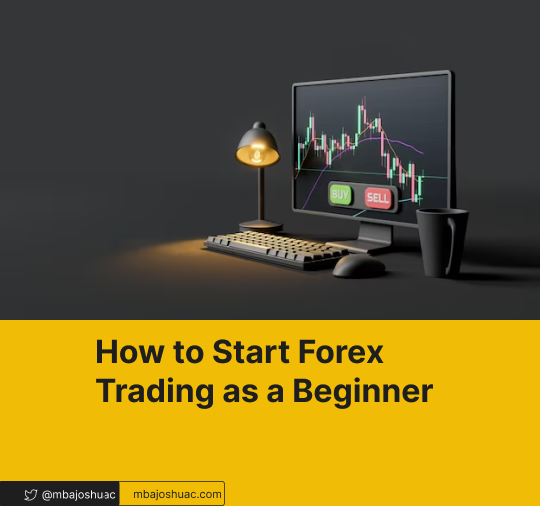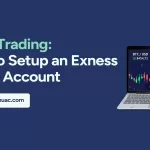The foreign exchange market, often known as Forex, is a global marketplace where currencies are traded. It supports international trade and investment by enabling the exchange of one currency for another. The Forex market is open 24 hours a day, five days a week, and spans many time zones and geographic locations.
Forex trading benefits the global economy by promoting cross-border trade and investment. Furthermore, the growing interest in Forex trading comes from the possibility of significant returns, making it appealing to a diverse variety of players, from institutional investors to individual traders.
Moreover, the Forex market allows traders to engage from anywhere in the world via online trading platforms. However, the world of Forex trading also comes with inherent risks. The volatility of currency pairs can lead to significant price fluctuations, which can either amplify profits or losses.
Understanding the Basics of Forex Trading
In forex trading, a solid understanding of the basics lays the foundation for success. Four key concepts that form the basics are:
Currency Pairs and Quotes
The forex market operates through currency pairs, each consisting of a base currency and a quote currency. Major pairs involve widely traded currencies like the US Dollar (USD), Euro (EUR), Japanese Yen (JPY), and British Pound (GBP). Minor pairs combine major currencies with those from smaller economies. However, for exotic pairs, it combines one major currency and one from a developing economy.
For instance, this is a currency pair: USD/JPY; USD is the base currency, while JPY is the quote currency. Additionally, traders encounter two prices: the bid price (the price at which traders sell) and the ask price (the price at which traders buy).
Pips and Lot Sizes
Understanding pips and lot sizes is required to calculate profit and loss. A pip is the smallest price change in a currency pair, generally the fourth decimal point (except in Japanese Yen pairings, when it is the second decimal point). The volume of a trade is determined by lot size. Standard lots are made up of 100,000 units of the underlying currency, while mini and micro lots are made up of 10,000 and 1,000 units, respectively. Calculating possible gains and losses in terms of pips and lot sizes is essential for risk management and trade planning.
Leverage and Margin
Margin refers to trading with leverage. Leverage amplifies a trader’s buying power by allowing them to control a larger position with a smaller amount of capital. While leverage can maximize profits, it also heightens potential losses. Properly understanding leverage and margin ensures you are aware of your risk exposure and helps you manage your trades responsibly.
Market Participants
The forex market consists of several actors, each with their own set of goals and outcomes. Banks, businesses, and financial institutions trade in the forex market for business operations, risk management, and investment. Retail traders, including individuals and small businesses, have access to the market through brokers. Banks are key actors due to their massive trade volumes, which may impact currency prices. Recognizing the roles of these many actors helps traders understand the dynamics influencing the market, allowing for more informed decision-making.
Notably, a good understanding of the basics of forex trading provides a solid foundation that determines how much success a beginner would make out of the market. To start on the right path as a beginner, here is a Forex basics tutorial by Joshua Mba.
Setting Up Your Trading Account
When setting up your trading account, select a reputable forex broker by conducting research into the broker’s credibility. Key things to note are regulation and licensing. The evaluation extends to the trading platforms and tools offered by the broker. A user-friendly and technologically advanced trading platform can significantly elevate your trading capabilities. Look for platforms that facilitate in-depth charting, real-time data, and different technical indicators to aid your market analysis.
Then, choose an account that suits your trading objectives and risk tolerance. Brokers often offer various account tiers, each with distinct features such as leverage, spreads, and minimum deposit requirements.
Before going into the live trading environment, practice in a demo trading setting. Engaging in a demo trade environment allows you to refine your strategies, test your market analysis skills, and familiarize yourself with executing trades. This phase bridges the gap between theory and practical application, enabling you to fine-tune your decision-making process.
Furthermore, the demo trading environment serves as a controlled testing ground where you can experiment with various trading techniques. It offers an opportunity to identify strengths and weaknesses in your approach, thereby enhancing your overall trading performance.
CLICK HERE TO CREATE YOUR FREE FOREX TRADING ACCOUNT ON OCTAFX
Developing a Trading Plan
A well-structured trading strategy is required for forex trading to align decisions with goals, manage risks, and ensure trading consistency. To create this strategy, you must first determine your goals and risk tolerance. This includes determining if you are looking for short-term profits, long-term growth, or passive income. Setting attainable goals and recognizing your ability to withstand potential losses creates a framework that motivates trading decisions.
Effective fund management is the foundation for sustainable trading within your plan. This includes selecting the capital ratio for all trades, establishing a risk percentage for each trade, and using stop-loss and take-profit orders. The risk percentage guarantees that your funds are wisely exposed, protecting you from excessive losses due to fluctuations in the market.
Importantly, stop-loss orders automatically exit a trade to mitigate losses, while take-profit orders secure profits by closing a trade at a predetermined level. These tools work together to protect your capital and encourage sensible, disciplined trading decisions, all of which contribute to the overall success of your trading strategy.
Resources and Market Analysis
Market analysis is a foundational step towards achieving success in forex trading. The three key approaches to market analysis—technical, fundamental, and sentiment—equip traders with diverse tools for informed decision-making. Technical analysis uses historical price movements, indicators, and patterns like candlesticks, support, and resistance to speculate on the market.
Fundamental analysis centers on economic indicators and central bank actions, providing a comprehensive understanding of a currency’s value drivers. Sentiment analysis, while often overlooked, gauges market psychology through news and social media, aiding in predicting market shifts. By seamlessly blending these methods, traders gain a holistic perspective of market dynamics, facilitating well-informed choices in response to changing conditions.
Noteworthy: building trading skills begins with education and resources. Online courses, webinars, and groups offer valuable insights into trading strategies, risk management, and psychological aspects. Establishing a structured trading routine is equally helpful, as understanding market hours and economic events optimizes execution and strategy adaptation. A trading journal is also important, serving as a personalized learning tool by documenting trades, analyzing outcomes, and identifying patterns and mistakes.
To get it right as a beginner, start with Joshua Mba’s explainer video on Forex Trading for Beginners.
Developing a trading strategy
Developing a successful forex trading strategy is characterized by constant refinement and practice. This phase involves three elements: backtesting, forward testing, and maintaining consistency. Backtesting allows you to assess your strategy’s historical performance, highlighting strengths and weaknesses. Forward testing, involving simulated live trading, validates your strategy in real-time conditions before risking real capital.
However, mastering emotions and psychology is essential in forex trading. Acknowledging losses as learning experiences and countering greed and fear through self-awareness are important. Disciplined risk management and patience prevent impulsive actions and the fear of missing out (FOMO). These psychological traits underpin consistent and rational decision-making.
Also, staying updated on market influences, exploring advanced techniques, and seeking mentorship contribute to well-informed decisions and adaptive strategies. Learning remains an ongoing process, enhancing the ability to navigate changing market dynamics and refine trading approaches. One of the ways to get better as a Forex trader is to learn from industry players who are ahead. Here is a beginner-friendly video on Forex trading by Joshua Mba.
Trading Forex as a beginner: Going from demo to live account
Transitioning from demo to live trading is a significant step for beginners in forex trading. While demo accounts offer risk-free learning, live trading involves real capital and emotions. A cautious approach is recommended, starting with a small portion of capital and applying lessons from demo trading. This gradual shift helps traders adapt to real trading while maintaining risk management and emotional control. Regularly reviewing and adjusting the trading plan based on experience is crucial to navigating live market conditions effectively.
Effective risk management and capital preservation strategies are essential:
- Diversification of trades reduces the impact of losses by spreading trades across different currency pairs and strategies to maintain portfolio stability.
- Avoiding Overleveraging prevents substantial losses by adhering to conservative leverage ratios and risking only a small percentage of capital per trade.
- Protecting Capital in Volatile Markets involves tight stop-loss orders and appropriate position sizing to preserve capital during unpredictable price movements.
Conclusion
Forex trading as a beginner involves a series of steps that collectively pave the way toward success. While this path may seem daunting, it is important to be persistent and patient. Forex trading is not a get-rich-quick scheme; it is a skill that demands continual learning and practice. Just as seasoned traders have faced challenges and setbacks, embrace each experience—whether a winning trade or a learning opportunity—to refine your strategies and develop your trading skills.
While Forex is a high-risk online trading environment, it has proven profitable over the years if maximized and engaged with caution, however, there are other days to earn online, like Affiliate marketing.
Read more about Joshua Mba here.






Leave a Reply